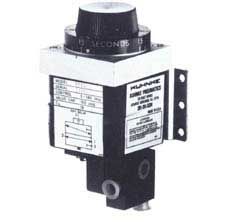The Marvel of Pneumatic Control Systems: How Various Elements Work in Harmony
 The realm of mechanics and automation has always been a source of fascination and intrigue. The seamless operation of machinery, the precision with which tasks are accomplished, and the harmony of various mechanical components working in tandem paint a picture of a well-orchestrated symphony. The pneumatic control system is the conductor of this symphony, ensuring that every part plays its role at the right time and tempo.
The realm of mechanics and automation has always been a source of fascination and intrigue. The seamless operation of machinery, the precision with which tasks are accomplished, and the harmony of various mechanical components working in tandem paint a picture of a well-orchestrated symphony. The pneumatic control system is the conductor of this symphony, ensuring that every part plays its role at the right time and tempo.
These control systems form the backbone of many industries. At the core, they utilize the power of compressed air to perform various tasks, making operations more efficient, safer, and reliable. They have transformed traditional manual processes into modern, high-speed automated systems.
Despite their widespread application, the workings of these pneumatic control systems are often a mystery to many. They represent a complex ecosystem where numerous components, each with a unique role, form an integrated system. Among these components, pneumatic timers, indicators, counters, valves, cylinders, and solenoids are essential.
In this exploration of pneumatic control systems, we will pull back the curtain on these elements, elucidating their functions, interactions, and contributions to the system's overall performance.
Pneumatic Control System: The Symphony of Timers, Indicators, Counters, Valves, Cylinders, and Solenoids
Let's delve into the workings of a pneumatic control system. Specifically, we'll explore how pneumatic timers, indicators, counters, valves, cylinders, and solenoids collaborate to run this intricate system smoothly.
Pneumatic Timers: Setting the Pace
Pneumatic timers serve as timing devices within pneumatic control systems. They set the rhythm, ensuring each component performs at the right time.
The Magic of Pneumatic Timers
- They are control devices generating pneumatic signals after a set time.
- They utilize a spring-loaded piston that moves based on applied pressure.
- Once the set time passes, the timer triggers a pneumatic switch.
Pneumatic Indicators: The System's Eyes
Pneumatic indicators offer visual cues about the status of various elements in the pneumatic control system.
The Role of Pneumatic Indicators
- Provide real-time data like pressure levels and flow rates.
- Assist in overseeing the system's operation.
- Help troubleshoot issues and maintain optimal functioning.
Pneumatic Counters: Counting the Beats
Pneumatic counters count the number of pneumatic impulses in a control system.
The Importance of Pneumatic Counters
- Vital in applications where a specific number of operations are needed.
- Ensure the system executes the right number of tasks.
Pneumatic Valves: Directing the Flow
Pneumatic valves serve as the traffic managers of a pneumatic control system. They control the flow of pressurized air.
The Vital Role of Pneumatic Valves
- Control air pressure, flow rate, and directional control.
- Dictate the airflow by opening, closing, or partially obstructing passageways.
Pneumatic Cylinders: Providing the Power
Pneumatic cylinders translate compressed air energy into linear motion.
The Working Principle of Pneumatic Cylinders
- Use compressed air to force a piston to move.
- The piston's movement can perform various tasks, from lifting heavy loads to intricate movements.
Solenoids in Pneumatic Control Systems
Solenoids in a pneumatic control system act as a bridge between the electrical and mechanical worlds.
The Contribution of Solenoids
- Convert electrical energy into mechanical energy.
- Control different components of the pneumatic system.
- Are crucial for system operation and efficiency.
Related Reading


- Ellis/Kuhnke Controls
132 Lewis Street Unit A-2, Eatontown, N.J. 07724
Phone: 1-800-221-0714
Fax: 732-291-8154
Email: Info@ekci.com
- Home Pneumatic Controls Technical Info CAD Drawings Contact Us Pneumatic Timers Blog Site Map
